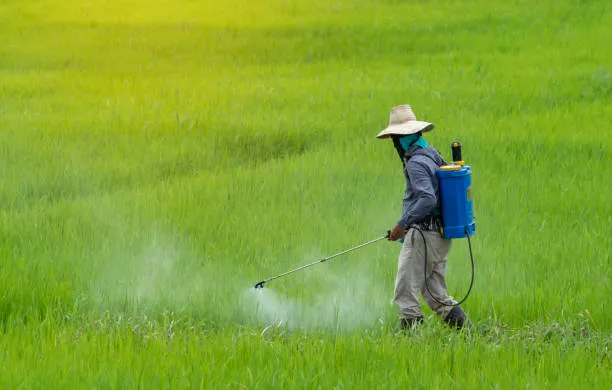Introduction
Effective pest management is crucial for ensuring optimal crop yields and farm profitability. Difenthiuron 50% WP (Pegasus) is a highly effective insecticide and acaricide that provides broad-spectrum control against sucking pests and mites in various crops. Known for its translaminar and contact action, Pegasus is widely used in cotton, vegetables, tea, and fruit crops.
This 800-word, plagiarism-free blog provides a detailed overview of Pegasus insecticide, covering its mode of action, benefits, target pests, application methods, safety precautions, and resistance management strategies.
What is Difenthiuron 50% WP (Pegasus)?
Pegasus is a wettable powder (WP) formulation containing 50% difenthiuron, a thiourea insecticide. It is highly effective against sap-sucking insects and mites, making it a preferred choice for integrated pest management (IPM) programs.
Key Features:
- Chemical Class: Thiourea (Insect Growth Regulator)
- Mode of Action: Chitin Synthesis Inhibitor (disrupts molting)
- Formulation: 50% Wettable Powder (WP)
- Target Pests: Whiteflies, thrips, jassids, aphids, mites
- Crop Compatibility: Cotton, vegetables, tea, citrus, grapes
Mode of Action
Difenthiuron works by:
- Inhibiting chitin synthesis, preventing proper molting of insect larvae.
- Disrupting the growth cycle, leading to deformed development and death.
- Providing translaminar movement (penetrates leaf tissues) and contact action.
Key Advantages of Its Mode of Action:
- Effective against nymphs and larvae – Targets immature pest stages.
- Long residual activity – Protects crops for 7–10 days.
- Low risk to beneficial insects – Safe for predators like ladybugs.
Benefits of Difenthiuron 50% WP (Pegasus)
- Broad-Spectrum Control – Effective against whiteflies, thrips, jassids, and mites.
- Translaminar Action – Reaches pests hiding on the underside of leaves.
- Low Phytotoxicity – Safe for most crops when used as directed.
- Compatible with IPM – Can be used alongside biological controls.
- Cost-Effective – Requires low dosage per acre.
Target Pests & Crops
1. Cotton
- Whiteflies (Bemisia tabaci)
- Thrips (Thrips tabaci)
- Jassids (Amrasca biguttula)
2. Vegetables (Tomato, Chilli, Brinjal)
- Aphids (Aphis gossypii)
- Mites (Tetranychus urticae)
3. Tea
- Tea Mosquito Bug (Helopeltis theivora)
- Red Spider Mite (Oligonychus coffeae)
4. Fruits (Citrus, Grapes)
- Citrus Psylla (Diaphorina citri)
- Grapevine Thrips (Rhipiphorothrips cruentatus)
Recommended Dosage & Application Method
1. Foliar Spray (Most Common Method)
- Dosage: 0.5–1 g per liter of water (or 250–500 g per acre in 200–250 L water).
- Spray Timing: Apply at first sign of infestation.
- Frequency: 2–3 sprays at 10–15 day intervals.
2. High-Volume Spray (For Dense Canopy Crops)
- Use higher water volume (400–500 L/ha) for better coverage.
3. Best Practices for Application
- Spray in the early morning or late evening.
- Ensure thorough coverage (underside of leaves where pests reside).
- Avoid spraying during flowering to protect pollinators.
Safety Precautions & Handling
- Wear PPE: Gloves, mask, goggles, and full-sleeved clothing.
- Avoid inhalation & direct contact – Wash hands after use.
- No eating/drinking during spraying.
- Storage: Keep in a cool, dry place, away from food and feed.
- Disposal: Triple-rinse containers before disposal.
Environmental & Resistance Management
- Low Toxicity to Bees – Safer than many conventional insecticides.
- Moderately Toxic to Fish – Avoid contamination of water bodies.
- Resistance Risk: Rotate with insecticides having different modes of action (e.g., neonicotinoids, spinosyns).
Conclusion
Difenthiuron 50% WP (Pegasus) is a highly effective insecticide and acaricide for controlling sucking pests and mites in multiple crops. Its unique mode of action, translaminar activity, and safety profile make it a valuable tool for IPM programs.
However, responsible usage is crucial to delay resistance and protect non-target organisms. Always follow label instructions, rotate insecticides, and monitor pest populations regularly.
Final Recommendations for Farmers
Monitor fields weekly for early pest detection.
Use at recommended doses – Higher doses do not improve efficacy.
Rotate with other MoA groups to prevent resistance.
By using Pegasus insecticide wisely, farmers can achieve better pest control, healthier crops, and higher profitability.
Disclaimer: Always follow the product label and local regulations. Consult an agronomist for crop-specific recommendations.
Sourashis Chanda brings readers their unique perspective on Business, Economy, Health and Fitness. With a background in Health and Physical Fitness of 2years, I am dedicated to exploring [what they aim to achieve with their writing, on the sustainable Economy of the country, various pro tips about business, latest goverment news, with some tips in health are and Fitness.







